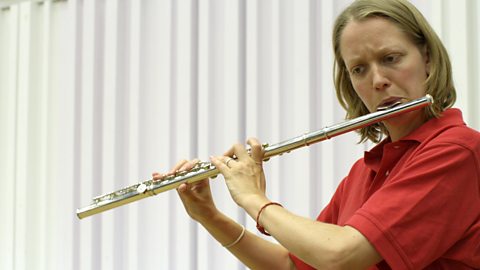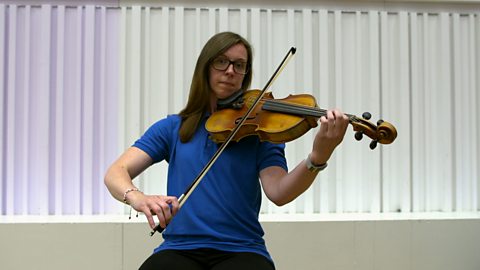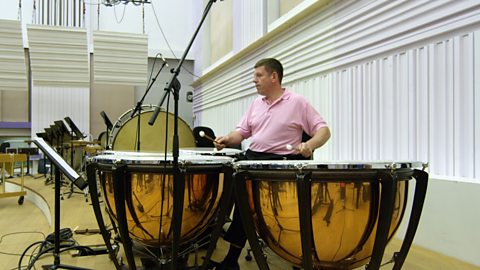What began as simple horns to notify communities of news, the brass instruments have transformed throughout time and technological advancements to instruments we know and recognise today.
What to consider when choosing a brass instrument
There are lots of brass instruments, different in size, shape and range which can determine the instrument that you begin to learn. It is crucial that you have the strength and hand-size to play some of the bigger brass instruments.
Learning a new instrument takes practice and a brass instrument is no different, strengthening your embouchure - the placing of the mouth on a mouthpiece and the muscles used, which is critical to becoming a good brass player.
If you already know how to play a brass instrument you could take up another which is slightly different in technique and sound. The French horn has three finger keys, just like a trumpet but uses different finger positions to play the same notes.
What are brass instruments made from
They are now made from the alloy brass - as the family name suggests. In the past, they will have been made from wood and animal horn but not these days, except for some that are made of fibreglass which are easier to march with which are easier to march with.
How to play brass instruments
To produce a sound from a brass instrument you have to press your lips against the mouthpiece and blow down the tube. When blowing into the mouthpiece you have to vibrate your lips so that they buzz against the mouthpiece.
Changing how fast or slow you vibrate your lips against the mouthpiece will change how high or low the note is. Another way to change the note is to press the valves in different combinations which effects the air flowing through the instrument.
The sound they make
The brass player has to press their lips against the mouthpiece and vibrate their lips incredibly quickly which makes a buzzing sound.
All of the family members sound bright and triumphant. These characteristics make brass instruments favourable for royal fanfares and war themed pieces.
Example listening pieces
Miles Davies: The Serpent's Tooth
Gustav Mahler: Symphony No.3, 2nd movement (French horn introduction)
Gustav Holst: The Planets, 1st movement, Mars, The Bringer of War
Wolfgang Amadeus Mozart: Requiem, III. Sequentia, Tuba Mirium
The trumpet
One of the smallest brass instruments to play and one the highest-pitched brass instruments, the trumpet is the brass family’s leader and plays most of the melodies. If you were to stretch out the bends in a trumpet it would be over six-feet long.
Before the 1900s trumpets (and other brass instruments) did not have valves to change pitch, instead they had different sized crooks, which are different insertable sized metal looped sections that make the horn longer or shorter. Lengthening or shortening the length of pipe will raise or lower the natural pitch of the instrument.
This means if the trumpet moved from G major to A major the player would have to insert another crook section so that it could transpose from G major to A major.
Stand tall when playing a trumpet, keeping your back straight as possible with your chin held up. This posture will help keep the air flow consistent which is crucial to playing held notes.
French horn
A French horn gets its name from hunting in France but the modern day French horn is capable of playing soft and harsh sounds, unlike its brass relatives.
One hand changes the pitch by activating the different finger pads whilst the other hand rests inside of the instrument's bell. The colour of the played sound can change depending on where the player places their hand inside of the bell.
The reach required to manoeuvre a French horn means that it may not be the first brass instrument to play for young brass enthusiasts.
Most French horn players will sit whilst playing but this doesn’t mean they slouch. A good posture is needed for a constant airflow.
Practising taking deep breathes and then exhaling consistently while keeping your abdomen tight will aid your diaphragm muscle to be able to reach the high notes and have the power to loudly play the low notes.
The trombone
The only brass instrument to possess a slide to change the pitch instead of buttons, the trombone is pitched between the highest-pitched and lowest-pitched.
Placing the slide closer to your chest raises the pitch of the note and moving the slide away will lower the pitch.
The instrument is often featured in many pieces as the voice of God - or the depths of Hell - due to its ability to glide between notes.
Due to the size of a trombone’s mouthpiece you will need to have stronger mouth muscles so to help produce a sound. Having a long reach will also help but you can buy extension handles to slide to different positions.
There are ten types of trombone in different in sizes and pitch which may be suited for younger players and those who are already familiar with a tenor trombone.
The tuba
This large brass member is pitched incredibly low, and is the lowest pitched brass instrument. If you were to unravel a standard tuba, it would be 16 feet long. A tubist has to have substantial lung capacity to blow enough air through the instrument.
The sounding colour of the tuba is deep and rich, which makes it a popular instrument to feature in symphony orchestras and jazz bands.
Braces are available to help support the load whilst marching, however, a tubist will be sat down in most classical performances.
A tuba player has to be skilled in both reading music and utilising the instrument. The lowest notes are written many ledger lines below bass clef bottom E.
More from Bring the Noise
The woodwind family
Find out about the wind family; flute, clarinet, oboe and bassoon.

The string family
Explore the violin, viola, cello and double bass.

The percussion family
Learn about the different percussion instruments including timpani drums.
